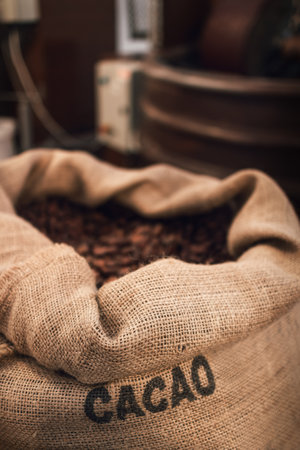Introduction to Seasonal Coffee Harvests
For anyone who loves a good cup of coffee, understanding where and when those beans are harvested is more than just trivia—it’s an essential part of appreciating quality and freshness. In Latin America, the rhythm of coffee production follows the changing seasons, with each country and even individual regions within countries having their own unique harvest calendars. These seasonal cycles have a direct impact on what ends up in your mug in the United States, influencing everything from flavor profiles to bean availability. For American coffee enthusiasts and buyers, being aware of these patterns is key to sourcing the freshest beans, planning purchases, and even discovering new flavors as they come into season. By learning how harvest times shape the Latin American coffee calendar, you can make more informed choices—whether youre shopping for single-origin beans at your local roaster or selecting green coffee for your business.
2. Climate and Geography: The Roots of Regional Differences
Latin America’s coffee calendar is deeply shaped by the region’s diverse geography and climate patterns. Each country—and often each farm—benefits from unique microclimates and varying altitudes that play pivotal roles in determining harvest periods and ultimately, the flavor profiles of the coffees produced. While most Americans are familiar with “single origin” coffee, fewer realize how much the timing of seasonal rains, temperature fluctuations, and elevation above sea level influence when coffee cherries ripen and are ready for picking.
Countries like Colombia, Brazil, Guatemala, and Costa Rica all occupy different stretches of latitude and altitude within Latin America, which directly impacts their harvest cycles. For instance, farms situated at higher elevations—think 1,400 meters (4,600 feet) or more—tend to have slower cherry maturation. This results in later harvests but also denser beans with more complex flavors. In contrast, lower-altitude regions may experience earlier harvests due to warmer temperatures accelerating fruit development. The table below provides a snapshot of how these factors align across some key coffee-producing countries:
| Country | Main Coffee Regions | Typical Altitude (meters) | Main Harvest Months | Coffee Characteristics |
|---|---|---|---|---|
| Colombia | Antioquia, Huila, Nariño | 1,200–2,000+ | Sept–Dec & Mar–Jun* | Balanced acidity, floral notes |
| Brazil | Minas Gerais, São Paulo | 800–1,300 | May–Sept | Nuts, chocolatey body |
| Guatemala | Huehuetenango, Antigua | 1,400–2,000+ | Dec–Apr | Citrus brightness, cocoa tones |
| Costa Rica | Tarrazu, Central Valley | 1,200–1,900 | Nov–Mar | Crisp acidity, honey sweetness |
*Colombia has two main harvest periods due to its position near the equator.
This dynamic interplay between climate and geography means that not only does each country have a distinct coffee calendar, but even neighboring farms can experience different harvest windows based on microclimatic variations. For American roasters and coffee lovers seeking fresh-crop beans or unique flavor profiles throughout the year, understanding these regional influences is essential.

3. The Coffee Harvest Calendar: Country-by-Country Highlights
Understanding the Latin American coffee calendar means looking closely at the unique harvest periods of each major producing country. This calendar is not just a set of dates—it’s a vital map that affects when fresh beans hit U.S. roasters and, ultimately, your local coffee shop. Below, we break down how Colombia, Brazil, Guatemala, and Honduras manage their seasons and why these timelines matter for both coffee availability and quality.
Colombia: Two Harvests, Year-Round Freshness
Colombia stands out with its bifurcated harvest schedule. The main harvest runs from September to December, while a secondary “mitaca” occurs between April and June. This dual-season approach ensures Colombian coffee remains available almost year-round in the U.S., making it a favorite for roasters seeking consistent supply and flavor profiles.
Brazil: Massive Yields in Mid-Year
As the world’s largest coffee producer, Brazil’s main harvest takes place from May through September. The sheer volume harvested during these months means most Brazilian coffees arrive in North America by late summer or early fall. Roasters often plan new blends around this influx, knowing that Brazilian beans form the backbone of many popular house blends due to their balance and consistency.
Guatemala: High-Altitude Complexity
Guatemala’s primary harvest spans December to March, with shipments peaking shortly after. Since Guatemalan coffees are prized for their bright acidity and complex flavors—attributes tied directly to high-altitude microclimates—the timing of their arrival is crucial for specialty buyers who want peak freshness for single-origin offerings in spring and early summer menus.
Honduras: Springtime Surplus
The Honduran harvest usually runs from November through April. As one of Central America’s fastest-growing coffee exporters, Honduras supplies significant volumes to the U.S. market during late spring and early summer. For importers and roasters, this period is an opportunity to source fresh Central American coffees just as other regional supplies begin to wane.
Impact on Availability
The staggered nature of these harvests means there is nearly always a fresh Latin American coffee arriving at U.S. ports. However, sharp buyers watch these windows closely—buying too early or too late can mean missing out on peak flavor or dealing with green coffee that has already started to age in warehouses. The result? A well-planned buying strategy built around the nuanced rhythm of each country’s seasonal calendar.
Impact on Coffee Quality and Flavor Profiles
Seasonal harvest timing in Latin America plays a pivotal role in shaping coffee bean quality and flavor profiles. The exact moment cherries are picked—whether at peak ripeness or slightly before or after—directly affects everything from sweetness to acidity, body, and aromatic complexity. For American roasters and cafes who seek to deliver consistent and exceptional cups, understanding these seasonal rhythms is more than a matter of sourcing logistics; it’s about curating nuanced experiences that match consumer expectations throughout the year.
During the main harvest season, when most cherries reach optimal ripeness, beans tend to be well-balanced, with pronounced sweetness, lively acidity, and clean finishes. Conversely, coffees harvested at the fringes of the season may exhibit more muted flavors or unexpected notes due to uneven cherry maturation or weather-related stressors. This dynamic creates distinct flavor waves throughout the calendar year—a factor American buyers must track closely to align their menus with what’s freshest and most expressive from origin.
Flavor Profiles by Harvest Period
| Harvest Timing | Bean Quality | Common Flavor Notes |
|---|---|---|
| Main Harvest (Peak Season) | High consistency, full development | Sweetness (caramel, honey), vibrant acidity (citrus, berry), balanced body |
| Early Harvest | Slightly underdeveloped, possible grassy notes | Herbal, green apple, mild floral hints |
| Late Harvest | Risk of over-ripeness or fermentation defects | Dried fruit, winey, heavier body, sometimes boozy undertones |
Why Seasonal Awareness Matters for U.S. Roasters and Cafes
The U.S. specialty coffee market values transparency and traceability—traits amplified by paying attention to harvest windows. By aligning purchasing cycles with Latin America’s harvest calendar, American roasters can offer customers rotating single-origin features that showcase peak freshness and flavor diversity. This approach not only boosts quality but also builds stronger relationships with producers by rewarding meticulous harvesting practices.
Staying attuned to seasonal shifts allows cafes to tell richer stories about their offerings: why a Guatemalan washed coffee tastes extra bright in spring or why a Colombian micro-lot feels especially lush come fall. Ultimately, understanding the interplay between harvest timing and cup quality equips U.S. businesses to educate consumers and set themselves apart in an increasingly competitive landscape.
5. Supply Chain Timing: From Farm to U.S. Coffee Shops
The journey of Latin American coffee from lush, high-altitude farms to your favorite U.S. coffee shop is tightly choreographed by seasonal harvest cycles. Each countrys harvest window—whether its Colombia’s near year-round picking or Central Americas concentrated spring yields—directly determines when fresh green coffee hits the global market.
For importers and roasters in the United States, these cycles are more than just a calendar footnote; theyre mission-critical for supply planning and product freshness. As soon as cherries are picked and processed at origin, the race against time begins. Shipping schedules hinge on both the harvests end and port availability, with green coffee often spending weeks at sea before it lands at major U.S. ports like Houston or Oakland.
Once stateside, importers push to move fresh arrivals swiftly through warehouses and into roasteries. This timing is central to marketing strategies—roasters proudly announce “new crop” offerings, leveraging the excitement of just-arrived coffees from Guatemala, Costa Rica, or Brazil. Coffee enthusiasts eagerly await these releases, knowing that seasonality often means brighter acidity and more vibrant flavors in their cup.
This annual rhythm also shapes café menus and consumer education campaigns. Many specialty shops highlight specific origins during peak months—think Ethiopian summer releases followed by a winter wave of Colombian microlots—cultivating a sense of anticipation and appreciation for coffee’s agricultural roots. In this way, the Latin American coffee calendar isn’t just a behind-the-scenes logistics concern; it’s celebrated as a core part of America’s specialty coffee experience.
6. Embracing Seasonality: Opportunities for U.S. Coffee Culture
Seasonal harvests across Latin America present a unique opportunity for American consumers and businesses to deepen their connection with coffee origins and enhance the overall coffee experience. By aligning with the Latin American coffee calendar, cafés, roasters, and retailers in the U.S. can create innovative ways to celebrate seasonality while supporting ethical sourcing and farmer livelihoods.
Seasonal Menus and Rotating Offerings
One of the most direct ways to engage with the Latin American coffee calendar is through the introduction of seasonal menus. Cafés and specialty shops can feature single-origin coffees as they become freshly available, highlighting distinct harvest periods from regions like Colombia, Brazil, or Guatemala. This not only offers customers a fresher cup but also educates them about the diversity of flavor profiles tied to specific harvest times.
Educational Initiatives for Consumers
Education plays a crucial role in fostering appreciation for seasonal coffees. Hosting tasting events, workshops, or even virtual seminars about harvest cycles can build awareness around why certain coffees shine at particular times of year. This approach encourages transparency and storytelling, allowing consumers to understand the journey from farm to cup and the impact of seasonality on quality.
Community Events and Collaborative Campaigns
Coffee businesses can collaborate with importers and Latin American producers to organize community events such as “fresh crop” launch parties or “origin weeks.” These events could include guest speakers, brewing demonstrations, or limited-time menu items featuring recently harvested coffees. Such initiatives strengthen ties between U.S. coffee drinkers and Latin American communities while creating memorable experiences that go beyond just another cup of joe.
Advancing Sustainability Through Seasonal Awareness
Embracing seasonal availability also aligns with sustainability goals. By prioritizing coffees at their peak freshness, businesses can reduce waste and encourage responsible purchasing decisions. Transparent communication about when specific origins are available empowers both consumers and suppliers to plan purchases around nature’s rhythms rather than artificial demand cycles.
Ultimately, recognizing and celebrating the influence of seasonal harvests on the Latin American coffee calendar invites U.S. consumers and businesses into a more mindful, connected, and flavorful coffee culture—one that honors the hard work of farmers and respects the land where each bean is grown.

